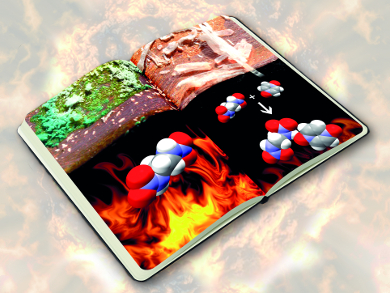Ethylenedinitramine (EDNA) is a known energetic material that requires careful handling owing to its chemical instability, caused by its two highly acidic protons. In order to overcome this problem and to attempt to change some of its physical properties, Christer B. Aakeröy and colleagues, Kansas State University, Manhattan, KS, USA, have applied a co-crystallization technique to target the acidic protons using suitable hydrogen-bond acceptors. A series of fifteen hydrogen-bond acceptors (co-formers) were investigated, eight of which led to the desired co-crystals.
The team found that the co-formers act as “supramolecular protecting groups” resulting in improved stabilization, which is important for the storage and processability of EDNA. They also found correlations between the structure and properties of the pure co-former and the physical property performances of the resulting energetic co-crystal. Thus, the thermal properties, impact sensitivity, and detonation velocity and pressure could be modified and altered with a certain degree of predictability.
These results suggest that systematic co-crystallization may allow the fine-tuning of properties of energetic material sto improve storage, handling, and processing with minimal negative impact on the eventual energetic behavior of the targeted substance.
- Crystal Engineering of Energetic Materials: Co-crystals of Ethylenedinitramine (EDNA) with Modified Performance and Improved Chemical Stability,
Christer B. Aakeröy, Tharanga K. Wijethunga, John Desper,
Chem. Eur. J. 2015.
DOI: 10.1002/chem.201501721




